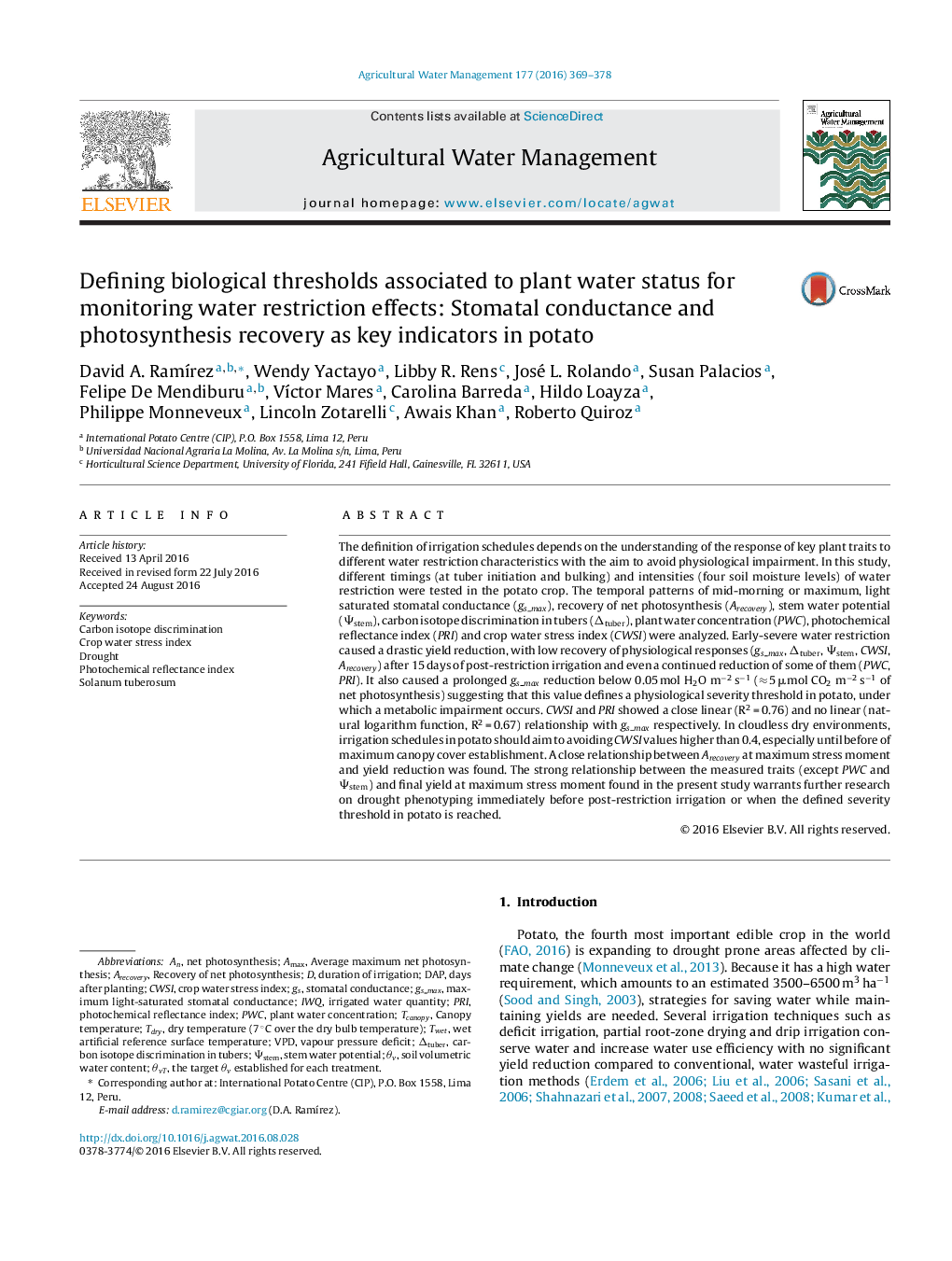| Article ID | Journal | Published Year | Pages | File Type |
|---|---|---|---|---|
| 6363440 | Agricultural Water Management | 2016 | 10 Pages |
Abstract
The definition of irrigation schedules depends on the understanding of the response of key plant traits to different water restriction characteristics with the aim to avoid physiological impairment. In this study, different timings (at tuber initiation and bulking) and intensities (four soil moisture levels) of water restriction were tested in the potato crop. The temporal patterns of mid-morning or maximum, light saturated stomatal conductance (gs_max), recovery of net photosynthesis (Arecovery), stem water potential (Ψstem), carbon isotope discrimination in tubers (Îtuber), plant water concentration (PWC), photochemical reflectance index (PRI) and crop water stress index (CWSI) were analyzed. Early-severe water restriction caused a drastic yield reduction, with low recovery of physiological responses (gs_max, Îtuber, Ψstem, CWSI, Arecovery) after 15 days of post-restriction irrigation and even a continued reduction of some of them (PWC, PRI). It also caused a prolonged gs_max reduction below 0.05 mol H2O mâ2 sâ1 (â 5 μmol CO2 mâ2 sâ1 of net photosynthesis) suggesting that this value defines a physiological severity threshold in potato, under which a metabolic impairment occurs. CWSI and PRI showed a close linear (R2 = 0.76) and no linear (natural logarithm function, R2 = 0.67) relationship with gs_max respectively. In cloudless dry environments, irrigation schedules in potato should aim to avoiding CWSI values higher than 0.4, especially until before of maximum canopy cover establishment. A close relationship between Arecovery at maximum stress moment and yield reduction was found. The strong relationship between the measured traits (except PWC and Ψstem) and final yield at maximum stress moment found in the present study warrants further research on drought phenotyping immediately before post-restriction irrigation or when the defined severity threshold in potato is reached.
Keywords
Related Topics
Life Sciences
Agricultural and Biological Sciences
Agronomy and Crop Science
Authors
David A. RamÃrez, Wendy Yactayo, Libby R. Rens, José L. Rolando, Susan Palacios, Felipe De Mendiburu, VÃctor Mares, Carolina Barreda, Hildo Loayza, Philippe Monneveux, Lincoln Zotarelli, Awais Khan, Roberto Quiroz,
